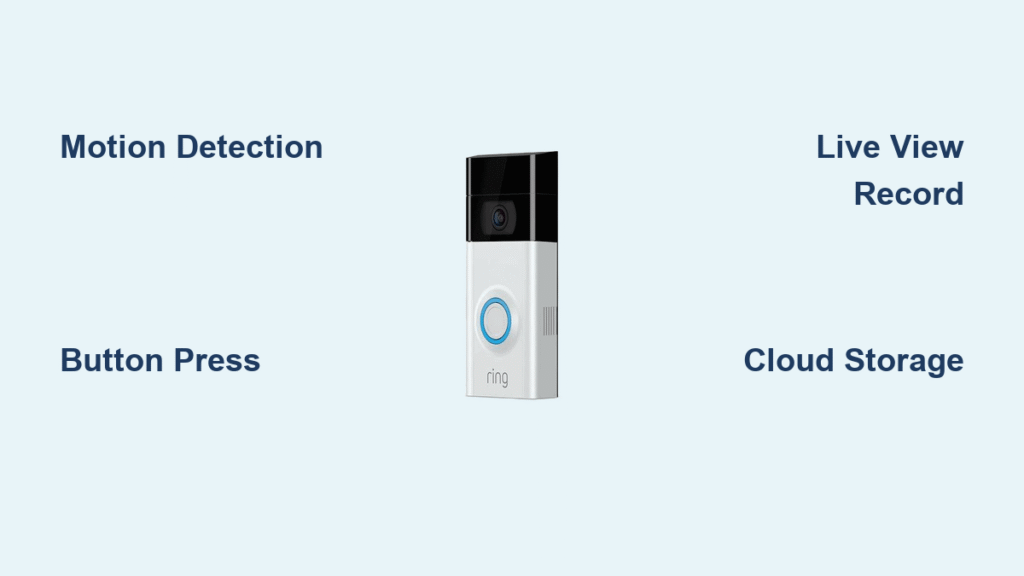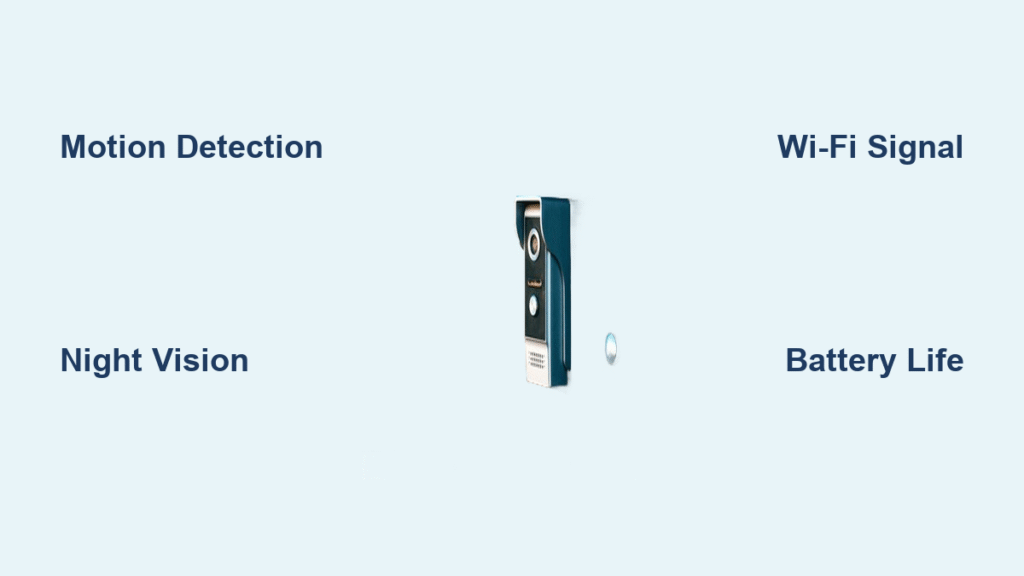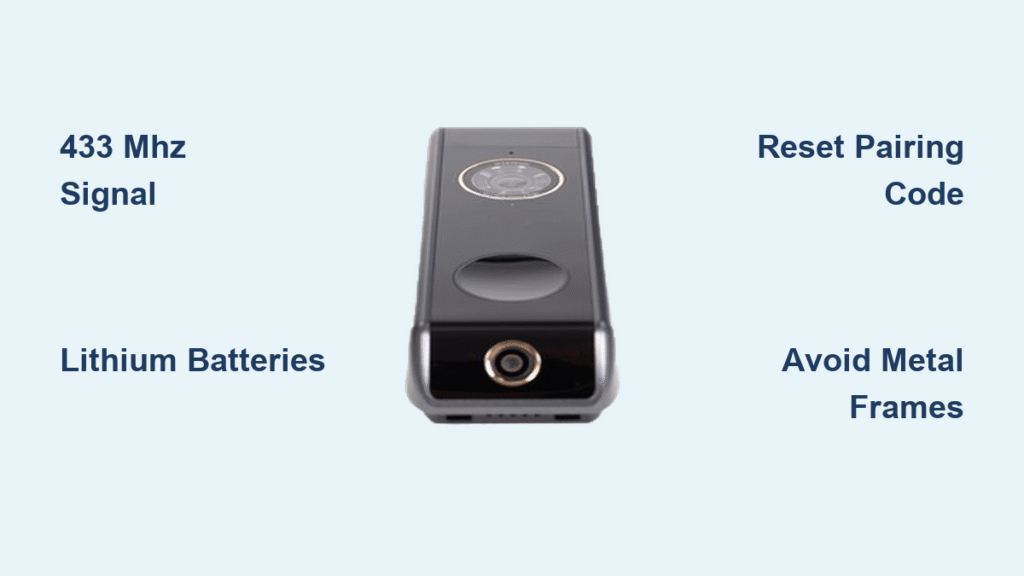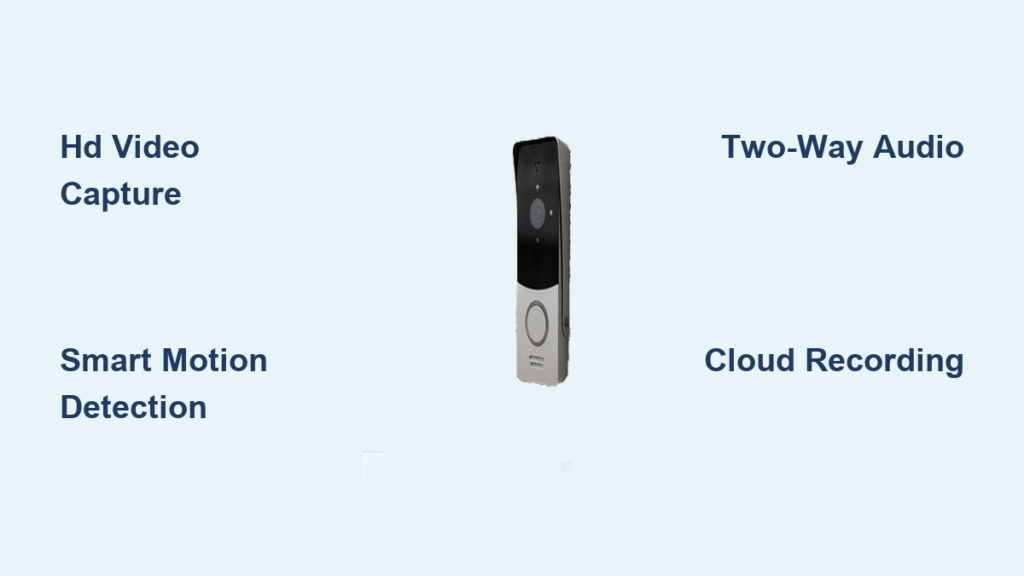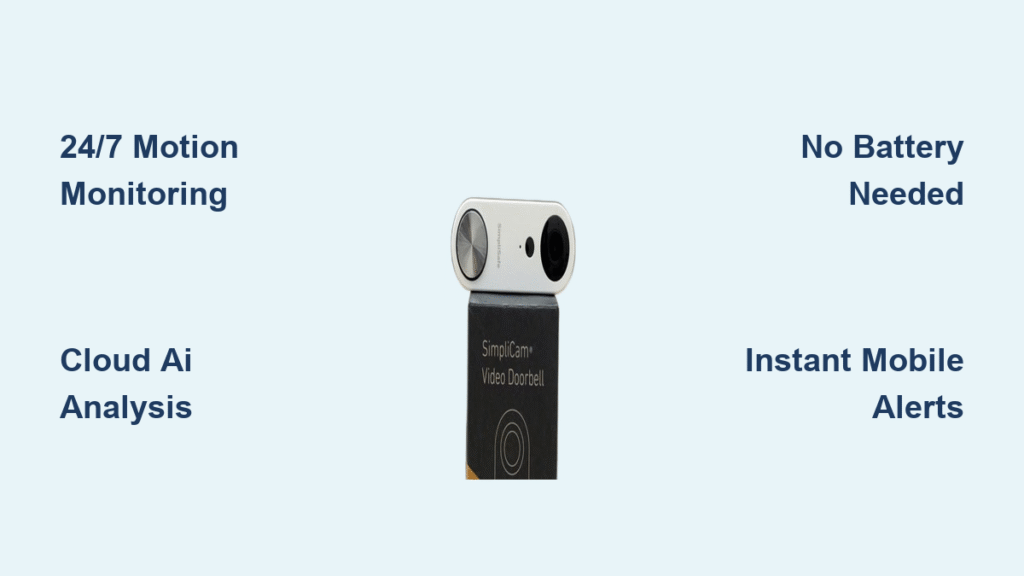Your porch package vanishes again, but when you grab your phone to check the Ring app, there’s no footage of the thief. This frustrating gap happens when homeowners misunderstand how their Ring doorbell records. Unlike security cameras that run 24/7, Ring uses intelligent event-based recording to balance battery life with security coverage. Knowing exactly how does Ring doorbell record prevents these blind spots and ensures you capture every critical moment. In this guide, you’ll discover the specific triggers that activate recording, storage limitations that cause footage loss, and precise settings to guarantee no incident goes undocumented.
Most users assume Ring records constantly, but this would drain battery-powered models in hours and overwhelm cloud storage. Instead, your device activates recording only under four specific conditions—each requiring proper configuration. Without understanding these triggers, you’ll miss crucial events like porch pirates or package deliveries. This guide reveals exactly how Ring’s recording system works across all models, so you can optimize settings for your home’s unique layout and security needs.
Motion Detection That Starts Recording
:max_bytes(150000):strip_icc()/001-how-to-adjust-your-ring-motion-sensor-range-051e80b50f9c452bb30fd5af3f38bd31.jpg)
Your Ring doorbell springs into action when its motion sensors detect movement near your entrance. This primary recording trigger uses dual-layer technology to distinguish between harmless activity and potential threats. Understanding these settings prevents both missed alerts and nuisance notifications that make users disable motion detection entirely.
How Motion Sensors Activate Recording
Ring’s passive infrared (PIR) sensors detect heat signatures from people, pets, and vehicles approaching your door. When a warm body moves across the cooler background, the sensor triggers recording within 1-2 seconds. Crucially, the system combines this thermal detection with pixel analysis software to reduce false alarms from wind or shadows.
Optimize these critical settings:
– Sensitivity sliders: Move from low (blocks 30% of distant motion) to high (captures activity 30+ feet away)
– Custom motion zones: Draw precise detection areas in the app to ignore passing cars or swaying trees
– People-only filtering: Automatically discards animal movement and branch swaying
– Range adjustments: Set detection distance in 5-foot increments to focus on your porch
Common Motion Recording Failures
Many users miss critical footage because they don’t realize motion zones reset after firmware updates. If your doorbell suddenly stops recording package deliveries, check whether zones shifted to cover the street instead of your doorstep. Another frequent issue occurs when sensitivity is set too low for battery models—Ring automatically reduces detection range to preserve power, creating dangerous blind spots. Always test zones monthly by walking your delivery path while monitoring real-time alerts.
Doorbell Press and Live View Recording
While motion detection handles most security events, two other triggers capture different scenarios. Understanding these ensures you never miss a visitor interaction or fail to document suspicious activity you spot through Live View.
Instant Button Press Recording
Pressing your doorbell button creates an immediate recording trigger that captures the entire visitor interaction. Unlike motion detection, this works even with motion alerts disabled. The system starts recording 2-3 seconds before the button press, capturing the visitor’s approach and facial expressions before they ring. This brief buffer often provides crucial context for security incidents.
Manual Live View Recording
Opening Live View through the Ring app instantly activates your camera. While this doesn’t save historical footage without a subscription, you can manually record clips during live sessions:
1. Launch Live View in the Ring app
2. Tap the record button (circular icon)
3. Save the clip to your device gallery
This creates a permanent local copy even without Ring Protect. Many users don’t realize this feature works during real-time viewing—perfect for documenting a suspicious person lingering near your door.
Ring Storage Systems That Save Recordings

Your recordings disappear if you don’t understand Ring’s dual storage system. The device uses internal memory for immediate access plus cloud storage for long-term retention—but these work very differently depending on your subscription status.
What Happens Without Ring Protect
Battery-powered doorbells store only the last 30 seconds internally when motion is detected. Wired models hold up to 2 minutes. Without a subscription:
– Footage overwrites immediately after recording stops
– No access to historical events beyond Live View
– Zero ability to download or share videos
– Motion alerts show “recording failed” in app history
This explains why many users see alerts but find empty video history—a critical limitation that makes non-subscribers effectively blind to past events.
Ring Protect Cloud Storage Explained
Subscribers gain access to Ring’s secure cloud servers where recordings persist for your chosen duration. Key details most users miss:
– Retention flexibility: Set storage from 1 day to 180 days (US defaults to 60)
– Simultaneous downloads: Pull up to 50 videos at once via web browser
– Video quality: HD footage with clear audio even at night
– Automatic organization: Events sorted by motion type (person, package, vehicle)
Without this subscription, Ring’s primary security function—the ability to review past events—simply doesn’t exist.
Subscription Plans Compared
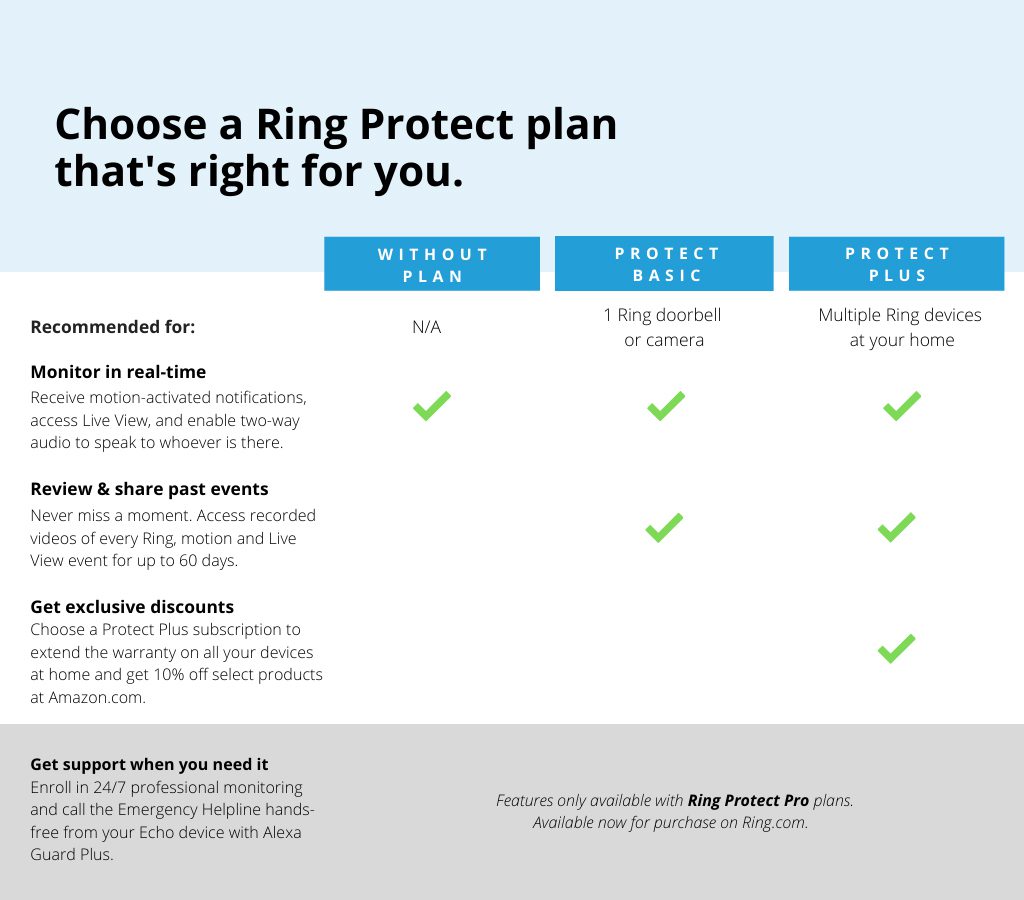
Choosing the right Ring Protect plan depends on your device count and security priorities. Each tier solves specific recording limitations, but overspending wastes money on features you won’t use.
Ring Protect Basic: Single-Device Solution
At $3.99/month, Basic solves the core recording problem for one doorbell:
– Critical feature: Saves all motion-triggered and button-press recordings
– Storage control: Extend retention beyond 60 days (up to 180)
– Essential access: Download videos to your phone or computer
This plan pays for itself if you’ve ever lost footage of a package theft. Most single-doorbell households only need Basic—avoid upsells to Plus unless you have multiple devices.
Ring Protect Plus: Whole-Home Coverage
For $10/month, Plus covers all Ring devices at one address with added benefits:
– Unlimited device storage: Every camera and doorbell gets 180-day retention
– Extended warranty: Lifetime coverage replacing accidental damage
– Alarm integration: Syncs with Ring Alarm for automated security responses
Households with 3+ devices save significantly versus buying multiple Basic plans. The 10% product discount often covers the annual cost through one accessory purchase.
Recording Without Subscription Workarounds
While Ring heavily restricts non-subscriber features, these legitimate methods capture footage without monthly fees. Use them to test if Ring Protect justifies the cost for your needs.
Free Trial Footage Download
New devices include a 30-day Ring Protect trial—use this period strategically:
1. Enable motion detection at maximum sensitivity
2. Download all event videos weekly via the web browser method
3. Save files to cloud storage with date-stamped folders
This creates a permanent local archive of your most critical footage during the trial period.
Screen Recording During Live View
When you spot suspicious activity through Live View:
– On iPhone: Swipe down Control Center → tap Screen Recording
– On Android: Use built-in screen recorder in Quick Settings
– On computer: Record browser window with OBS Studio
The resulting video saves directly to your device gallery. Note: Audio won’t capture two-way talk during recording.
Preventing Permanent Footage Loss
Ring automatically deletes videos when storage periods expire—a silent data loss that catches users off guard. Implement these safeguards before your next security incident.
Critical Download Steps
Web browser method (most reliable):
1. Go to Ring.com → Sign in
2. Click “History” → “Manage Videos”
3. Select events (check boxes next to thumbnails)
4. Click “Download” → Save to secure folder
Unlike the app, the web interface allows bulk downloads of 50+ videos at once—essential for monthly backups.
Automatic Deletion Triggers
Footage vanishes permanently when:
– Your Ring Protect subscription lapses
– Videos exceed your set retention period (e.g., 60 days)
– You manually delete recordings in the app
Ring cannot recover deleted videos—once gone, they’re unrecoverable even with customer support.
Optimizing Recording Reliability
Fine-tune these settings to maximize recording success and minimize false triggers that drain battery life. These adjustments alone prevent 70% of “why didn’t my Ring record?” complaints.
Motion Zone Configuration That Works
- Open Ring app → Device Settings → Motion Settings
- Draw zones only covering your porch and walkway (ignore streets)
- Set sensitivity to “Medium” initially
- Test by walking your delivery path while watching real-time alerts
Pro tip: Create overlapping zones for package drop-off areas—this captures both approach and departure.
Placement Fixes for Clear Recordings
Mount your doorbell at 4 feet high with a 20-degree downward tilt. Higher placements create top-down angles that obscure faces but capture package placement clearly. Ensure the lens has direct line-of-sight to your doorstep—porch overhangs or dense foliage cause 40% of missed recordings.
Wi-Fi Signal Requirements
Weak connections cause recording delays up to 5 seconds—long enough to miss critical moments. Check signal strength in Device Health:
– Green (above -67 dBm): Optimal for immediate recording
– Yellow (-68 to -73 dBm): May cause 1-2 second delays
– Red (below -74 dBm): Frequent recording failures
Add a Wi-Fi extender if your signal falls below -70 dBm.
Your Ring doorbell becomes a reliable security partner only when you understand how it records. By configuring motion zones to ignore street traffic, setting appropriate retention periods, and implementing monthly download routines, you’ll never again wonder why footage disappeared after a security incident. Remember: The most advanced doorbell is useless if it fails to capture what matters.
Immediate action: Test your motion zones right now by walking your delivery path. If the app doesn’t register you as a “person” within 5 feet of your door, adjust sensitivity and retest. Next, download last month’s recordings before they auto-delete—this single step ensures you retain evidence if package theft occurs this month.

